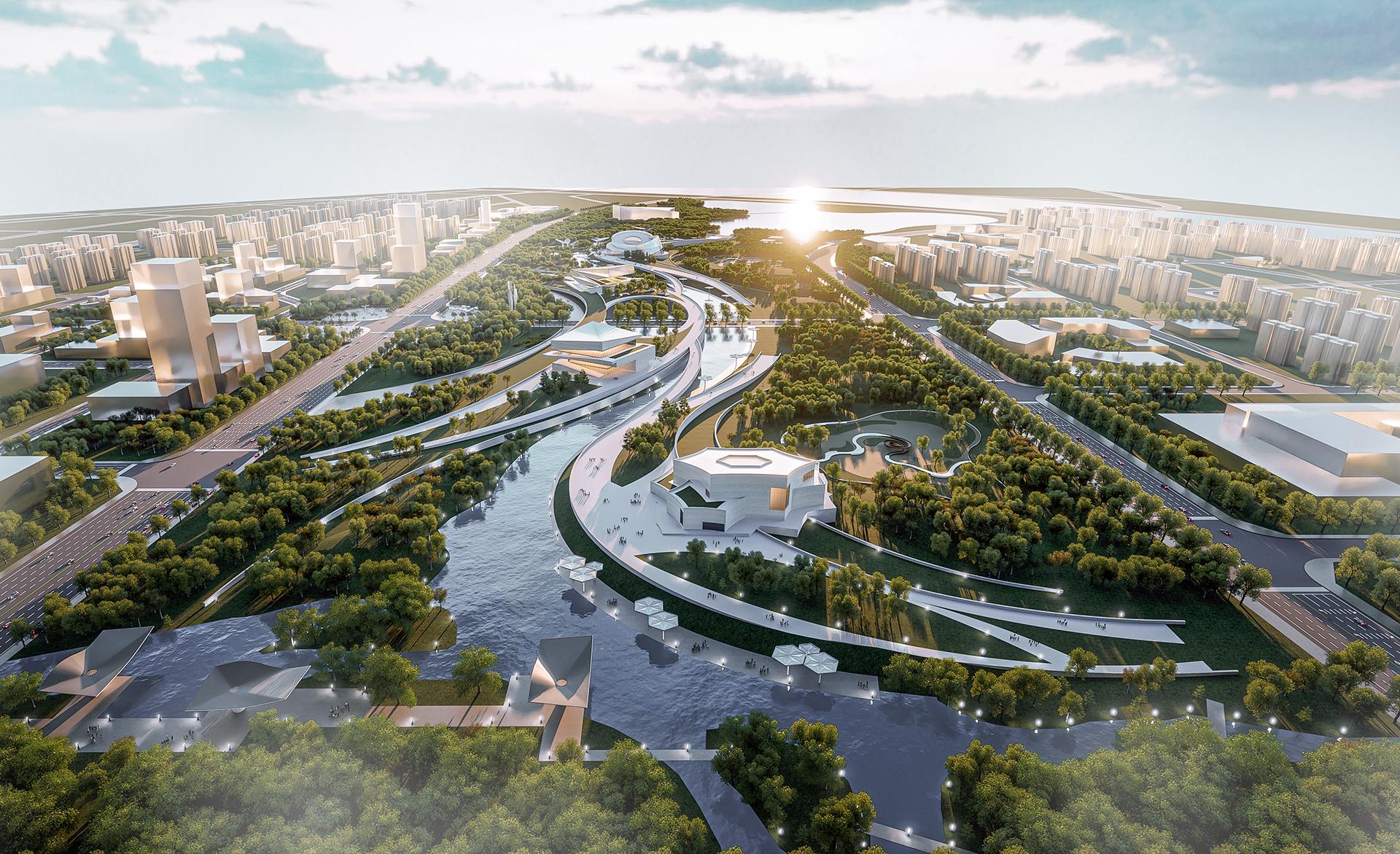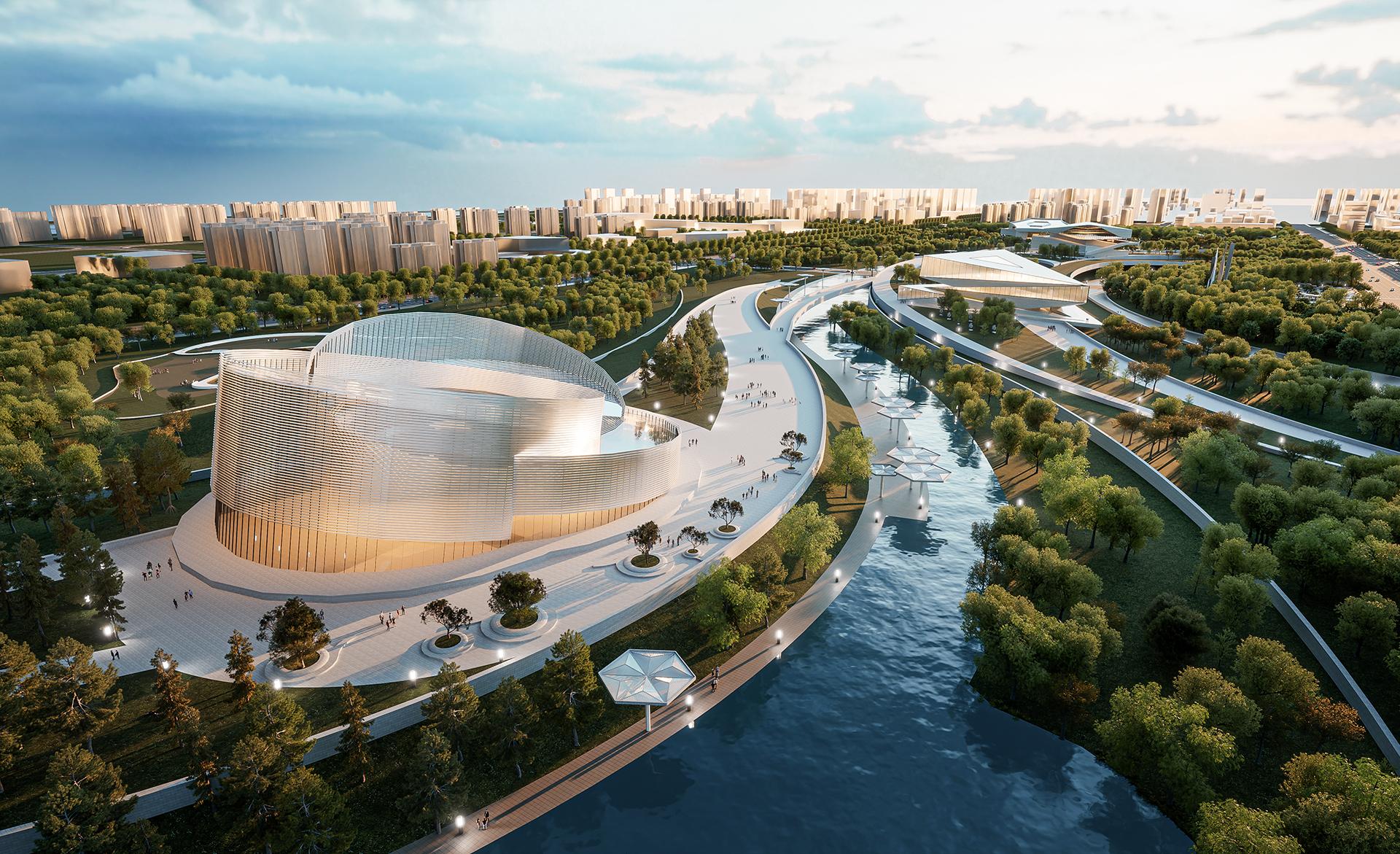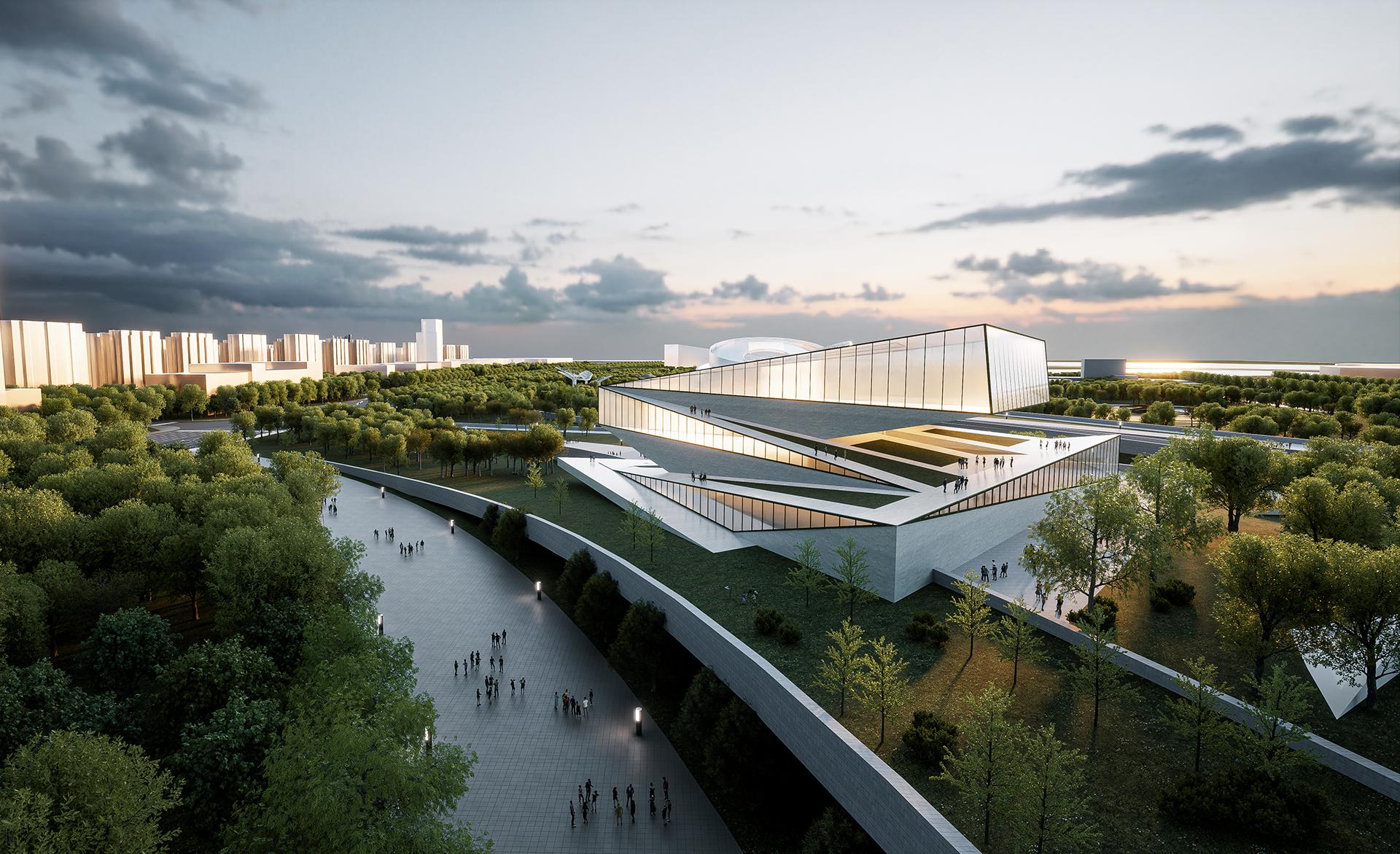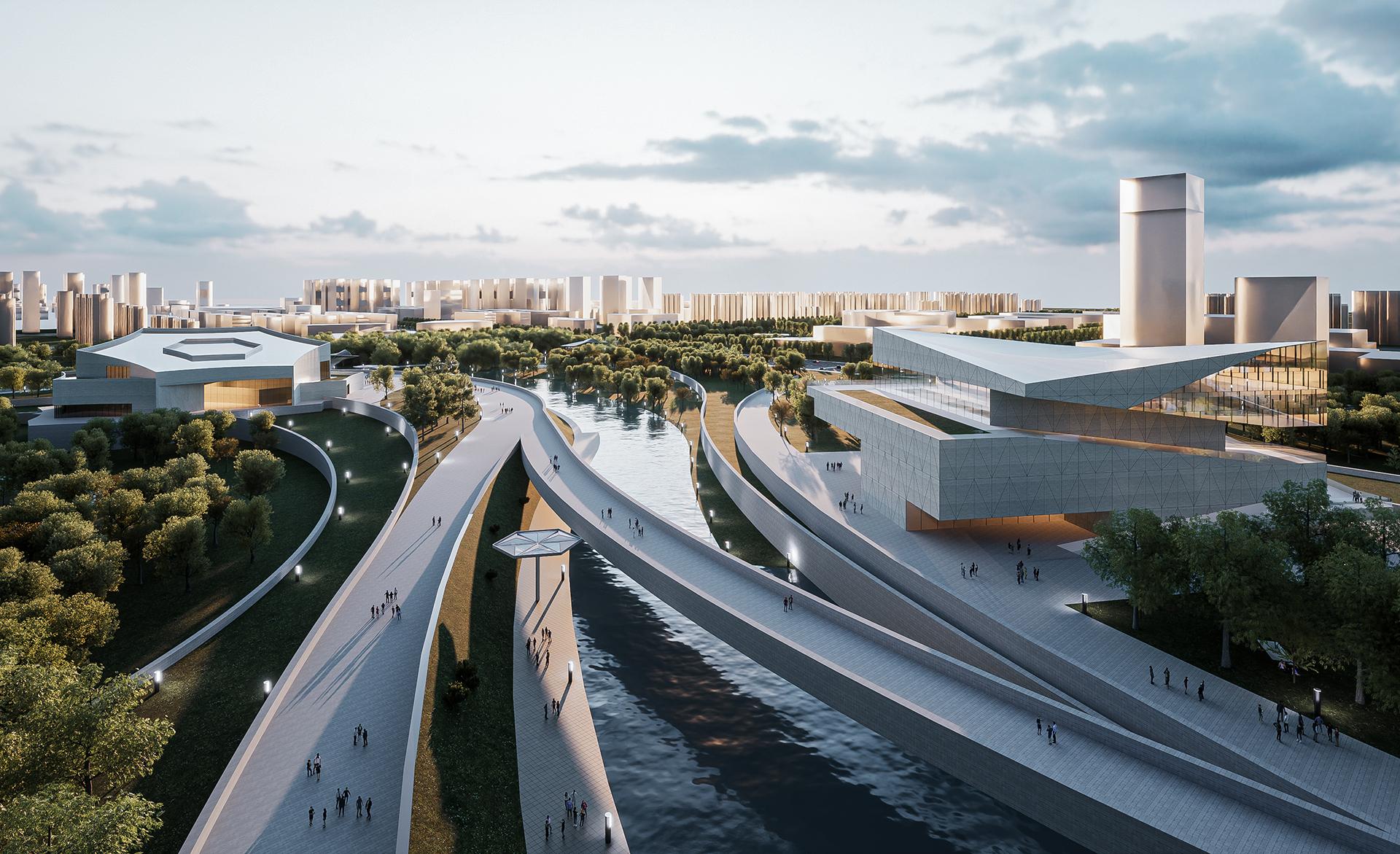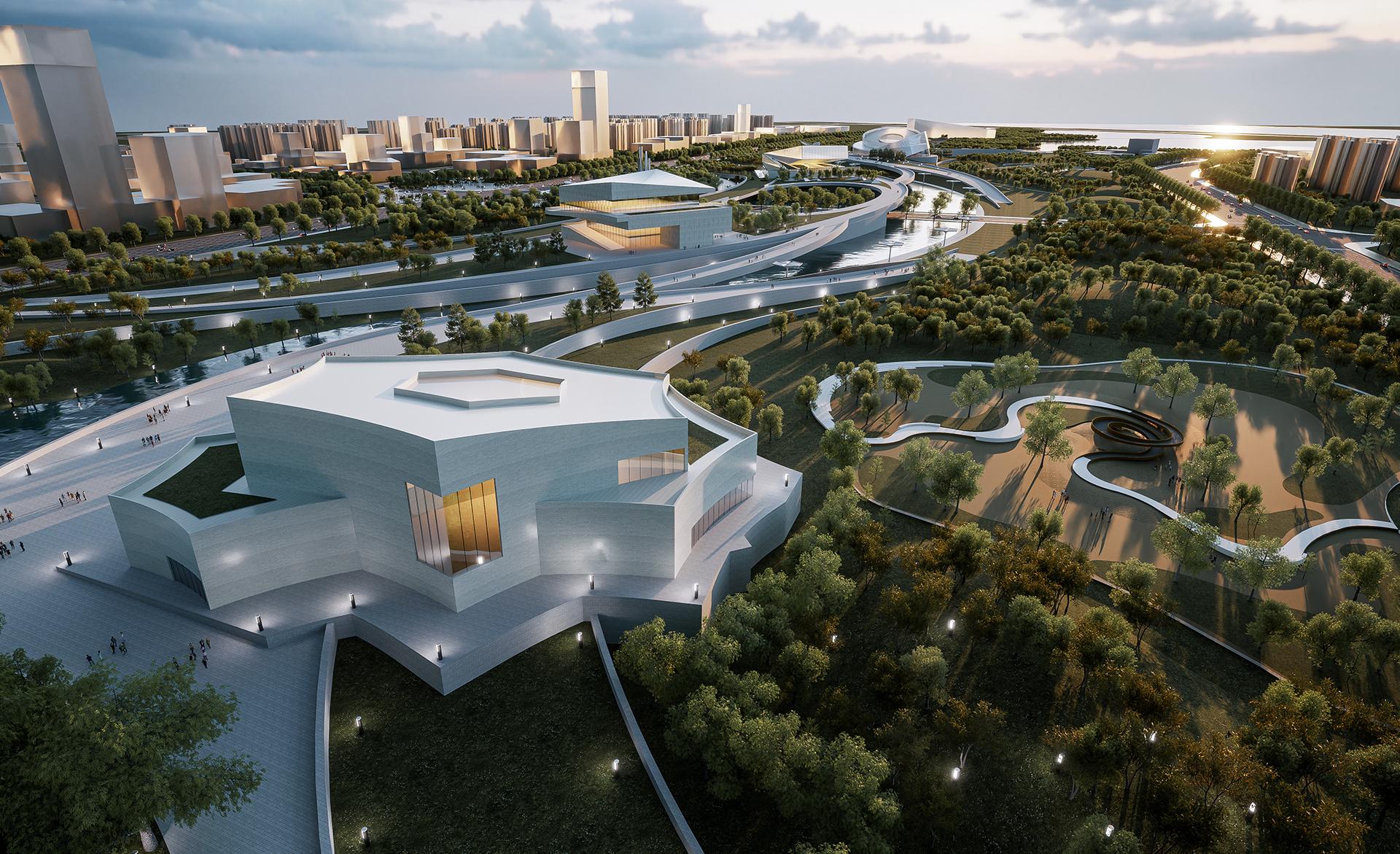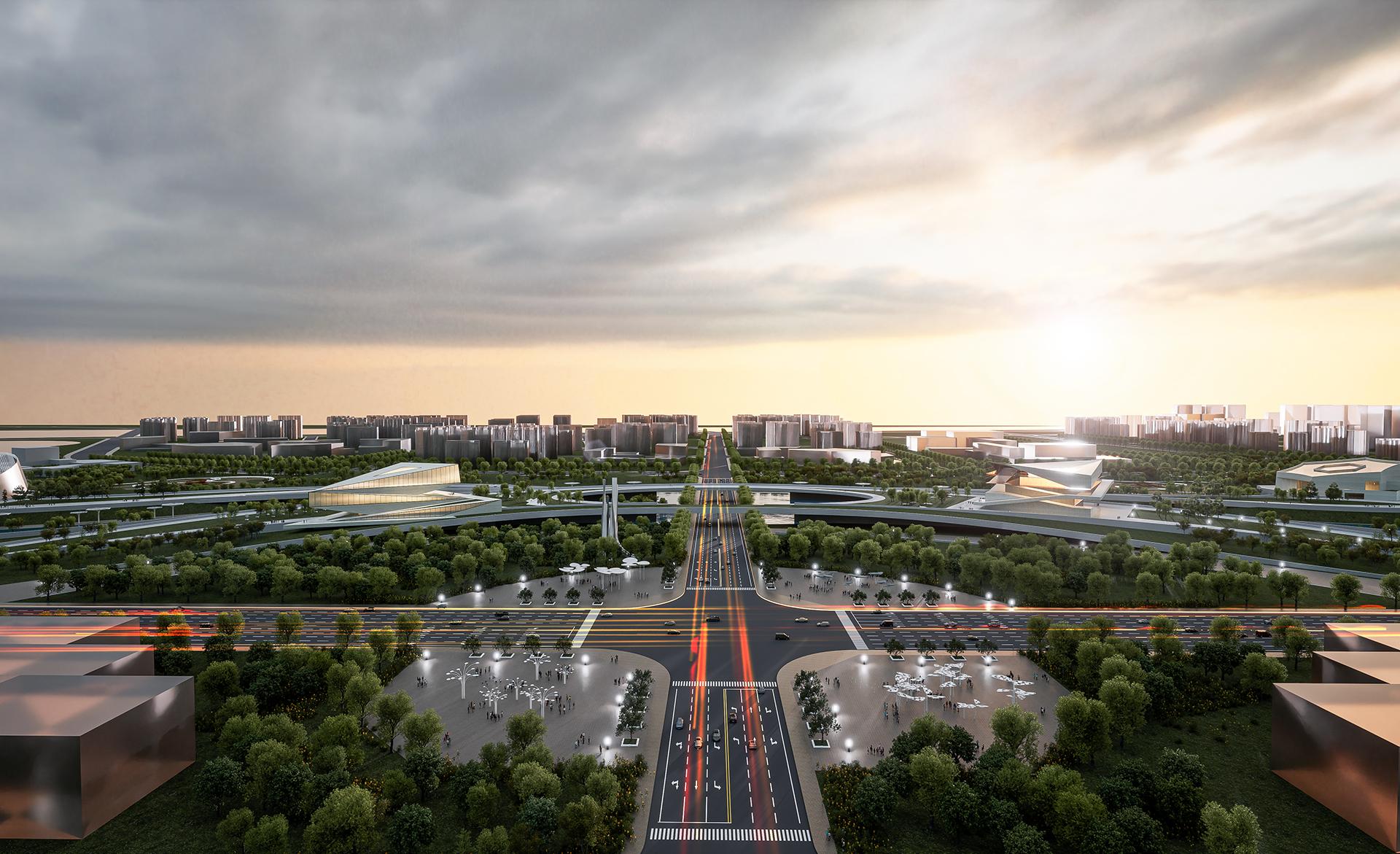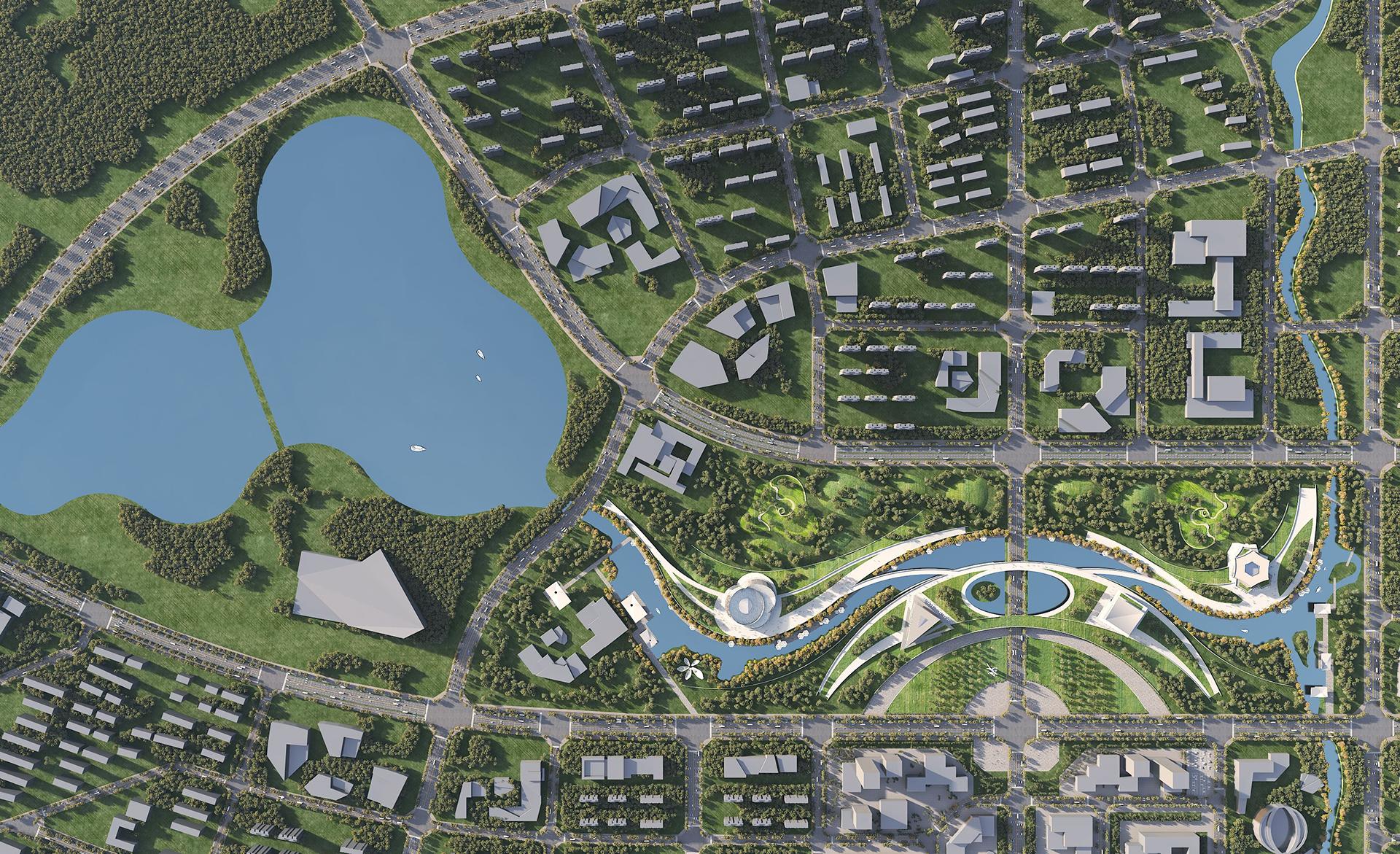Jiuquan New Energy and Aerospace Museum
Location: Gansu, China
Site Area: 11.22 ha
Building Area: 89,600 sqm
Client: Jiuquan New Town District Management Committee
The project is divided into four plots, strategically placed within a 245-hectare urban oasis. The plan includes the Aerospace Museum, Nuclear Industry Museum, New Energy Museum, and Carbon Neutral Museum, presenting a comprehensive display of Jiuquan's history and future through the themes of technology and innovation, ecology, and nature.
To achieve this, we propose the planning concept of the "Silk Road Green Belt," emphasizing integration with nature. Using the wetland park as a backdrop, we establish a natural axis that connects the four major science and technology exhibition halls scattered throughout the park, linking the east-west and north-south urban green open spaces.
In the design, we first create a ground level closely integrated with the landscape, forming a rich three-dimensional garden space along with the water system. The main functions and iconic volumes of the museums are placed above this three-dimensional garden. The four museums are tightly connected by aerial landscape bridges, forming enlarged platform gardens at nodes, stitching together the urban park that is fragmented by the north-south main roads. The blue and green intertwined natural axis connects various attractions and important buildings within the park like a ribbon, representing different stages of Jiuquan's urban culture from west to east: natural and humanistic history on the west side, aerospace and nuclear energy technology in the middle, and ecological green future on the east side.
The imagery of the four museums is inspired by basic geometric forms found in nature, each given a unique interpretation based on its thematic features. These include the Aerospace Museum symbolizing the infinite cosmic rings, the Nuclear Industry Museum representing power, the New Energy Museum themed around circular regeneration, and the Carbon Neutral Museum with its conceptual significance based on the carbon chain structure. Each museum has its distinctive symbolic image yet harmonizes with others, presenting different themes and forms that showcase Jiuquan's past, present, and future.
Our aim is to create a natural and symbiotic ecological oasis, an open and interconnected cultural settlement. Our design prioritizes both greenery and humanities, embracing both inclusiveness and innovation. By coordinating culture, technology, and nature, we aim to foster mutual development and create a urban showcase that connects people with nature, the present with the future.

